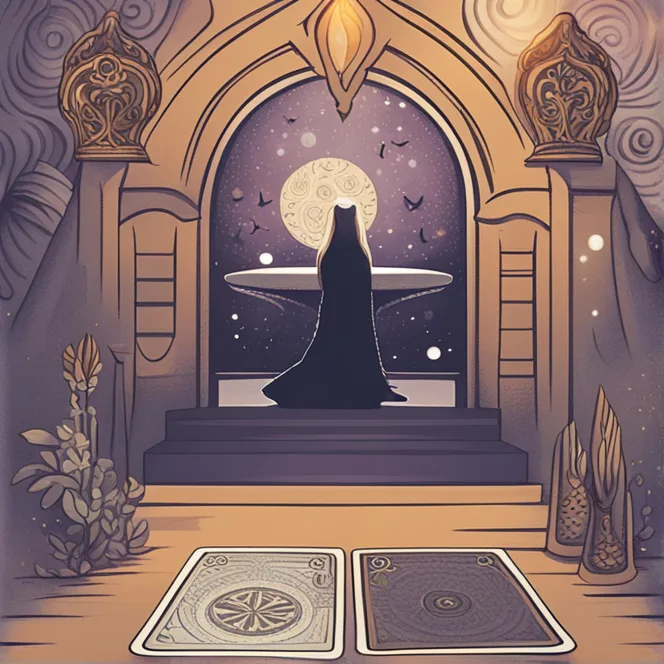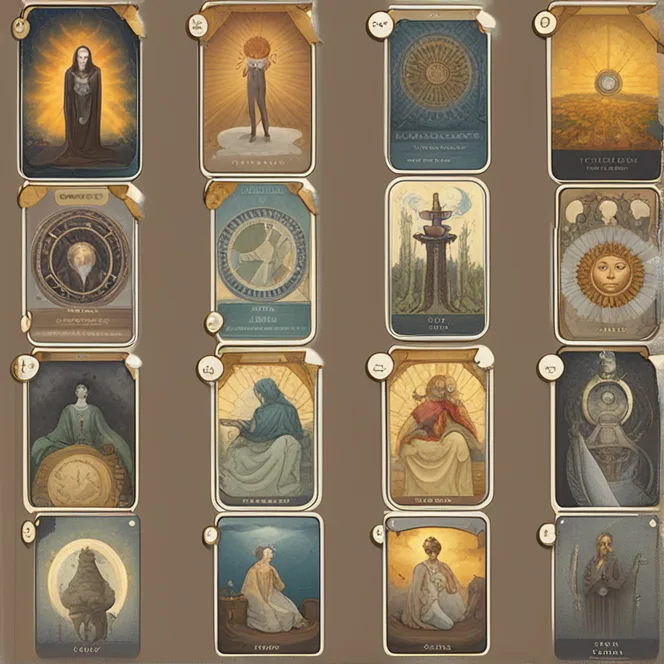
Introduction to Tarot
Tarot reading stands as a storied practice, steeped in mystery and contemplation. Its mystique has fascinated mankind for centuries, offering a window into the deeper realms of the psyche and the tapestry of the universe. A standard tarot deck comprises 78 cards, each brimming with symbolism and significance. While many perceive tarot as a tool for divination, its broader purpose encompasses meditation, self-reflection, and psychological exploration. The art of tarot interpretation hinges on understanding these symbols and their correlations to our lives and the cosmos at large.

The Major and Minor Arcana
The tarot deck is divided into two main categories: the Major Arcana and the Minor Arcana. The 22 Major Arcana cards symbolize life's karmic and spiritual lessons, encompassing archetypal themes that resonate with the human journey. From 'The Fool,' representing beginnings and potential, to 'The World,' marking completion and unity, these cards chart a narrative of personal evolution. In contrast, the 56 Minor Arcana cards reflect everyday occurrences and trials. They are further split into four suits—Cups, Pentacles, Swords, and Wands—each addressing a different aspect of life, including emotions, material matters, intellect, and creativity.

Preparing for a Reading
Before delving into the intricate practice of interpretation, one must create an environment conducive to introspection and clarity. This involves grounding oneself, preferably in a tranquil space, and shuffling the tarot cards while focusing on the question or subject of contemplation. The querent should approach the tarot with openness and a readiness to embrace the insights revealed, regardless of whether they align with preconceived hopes or expectations. Choosing a spread that fits the nature of the inquiry is also vital, as varied configurations can yield different layers and dimensions of understanding.

Interpreting the Spread
Each position within a tarot spread offers a unique vantage point from which to view the question at hand. The cards' illustrations, symbols, and traditional meanings form the foundation of interpretation. However, the tarot reader's intuition plays an indispensable role in discerning nuanced messages. Paying attention to initial impressions, emotional reactions, and the interplay between cards can reveal surprising depths. Furthermore, the context of the surrounding cards can significantly alter the interpretation of any single card, emphasizing the importance of considering the spread as a dynamic and interconnected narrative.
Navigating Reversed Cards
Reversed tarot cards, appearing upside down in a reading, often mystify both seasoned and novice readers. While they can denote setbacks, challenges, or an inward focus, they're not inherently negative. Interpreting reversals demands a grasp of the upright card's essence and an intuition-led assessment of its inversion's impact on the reading. They may reflect a need to pay special attention to certain areas of one's life or hint at internal obstacles requiring acknowledgment and resolution.
Integration and Reflection
Post-reading, the integration phase empowers the querent to reflect on the revelations and consider the suggested paths or truths offered by the cards. The power of tarot rests not in predicting a predestined future but in illuminating possible avenues and the querent's own power to influence their destiny. The synthesis of the tarot reading should promote contemplation, inspire action, and foster a deeper understanding of self and circumstances. As the insights from the tarot are pondered upon, the querent is often guided toward personal growth and informed decision-making.
Published: 12/15/2023
Modified: 12/18/2023
More predictions
Come back here soon to learn more about yourself and your future


Mystical Moments Tarot Revealed
Delve into the enchanting world of the Mystical Moments Tarot, where every card draws you deeper into the realm of insight and intuition.


The Intersection of Tarot & Astrology
Dive into the synergistic relationship between tarot readings and astrology, and discover how they combine to offer a unique perspective on your life's journey.


Daily Tarot Wisdom
Discover insights and guidance with our daily tarot card readings aligned with current astrological influences.